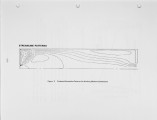| Title |
Como a Numerical Model for Predicting Furnace Performance in Axisymmetric Geometries |
| Creator |
Fiveland, W. A.; Morita, Shigeki; Azuhata, Shigeru |
| Publisher |
University of Utah |
| Date |
1983 |
| Spatial Coverage |
Akron, Ohio |
| Abstract |
A computer code is being developed to model steady-state, swirling, natural gas or pulverized coal combustion. This computer program is based on fundamental physics and chemistry and is uniquely organized into independent modules that model the various interacting processes which occur during combustion: flow, heterogeneous and homogeneous chemical reaction, and heat transfer. As models are improved or as new ones are developed, this modular structure allows portions of the program to be updated with minimal impact on the remainder of the program. These models will eventually assist combustion designers in the understanding of the complex combustion processes. In this paper, swirling methane combustion and nonswirling pulverized coal combustion are investigated. Numerical results for flow, heat transfer, and chemistry are presented for each case and compared with available data and predictions. These initial studies have been useful in providing additional insight into the understanding of these complex combustion processes. |
| Type |
Text |
| Format |
application/pdf |
| Language |
eng |
| Rights |
This material may be protected by copyright. Permission required for use in any form. For further information please contact the American Flame Research Committee. |
| Conversion Specifications |
Original scanned with Canon EOS-1Ds Mark II, 16.7 megapixel digital camera and saved as 400 ppi uncompressed TIFF, 16 bit depth. |
| Scanning Technician |
Cliodhna Davis |
| ARK |
ark:/87278/s6bz68kg |
| Setname |
uu_afrc |
| ID |
532 |
| Reference URL |
https://collections.lib.utah.edu/ark:/87278/s6bz68kg |








































